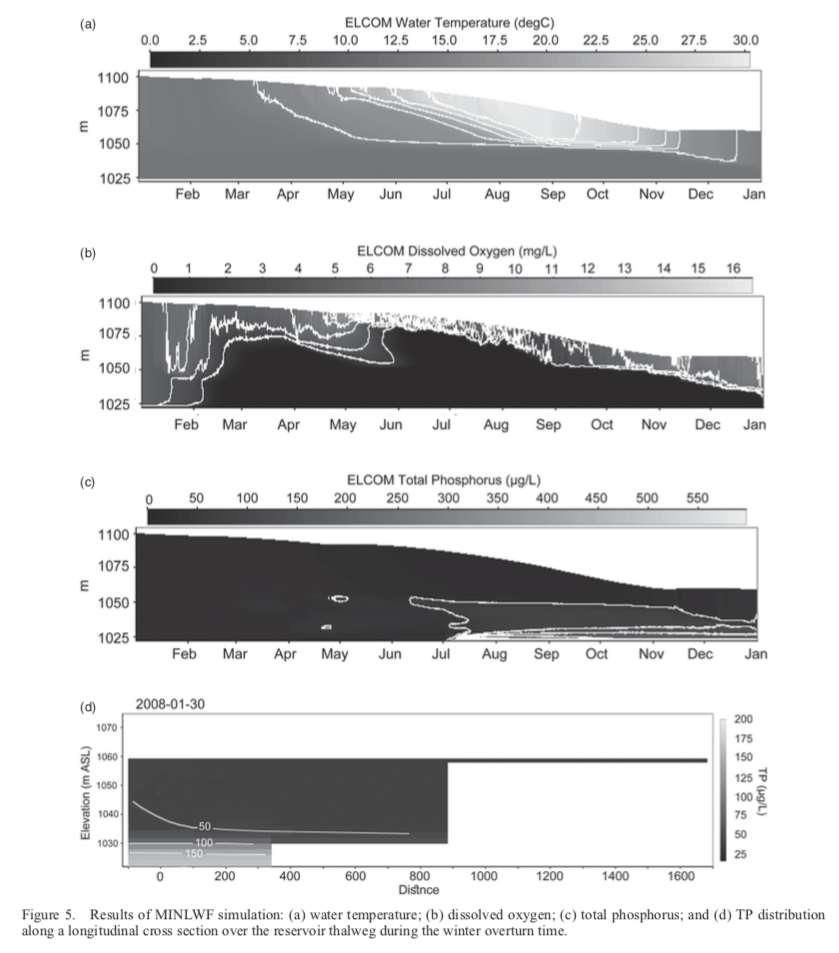Pre-impoundment assessment of the limnological processes and eutrophication in a reservoir using three-dimensional modeling: Abolabbas Reservoir, Iran
ABSTRACT: Eutrophication in lakes and reservoirs plays a key role in aquatic environments and water quality management by affecting oxygen and nutrient cycles, especially in deep and large impoundments. Prior to reservoir construction, understanding the potential for eutrophication would provide valuable information to water resources planners on the critical factors affecting eutrophication and how reservoir operations might need to be limited or controlled. The pre-impoundment problem, by definition, can only be studied by numerical models, and herein a methodology for applying three-dimensional (3D) hydrodynamic and ecosystem models is proposed. In this paper, the 3D hydrodynamic Estuary, Lake, and Costal Ocean Model is coupled with the Computational Aquatic Ecosystem Dynamic Model to simulate the oxygen and nutrient cycles (eutrophication processes) in a planned deep reservoir in southwest Iran (Abolabbas reservoir). The effects of three scenarios (one normal and two drought conditions) on the reservoir’s eutrophication are investigated. Simulated are the life, metabolism, and the settling/resuspension cycles for two groups of phytoplankton (cyanobacteria and chlorophytes), as well as the nitrogen–phosphorous–carbon and dissolved oxygen cycles within the water column. To evaluate the eutrophication, the Trophic State Index and Vollenweider’s model are applied to the model output for the total phosphorus. The results show that under normal conditions, the reservoir should be oligotrophic, whereas the drought scenarios cause a general lowering of the water quality indices and the development of a mesotrophic–eutrophic or even a fully eutrophic state. Under drought conditions, the reservoir might suffer from severe oxygen depletion, especially in the hypolimnion. The analyses indicate further that phosphorus in the reservoir’s inflow is the eutrophication-limiting factor for all the scenarios. The sensitivity analysis indicates that the wind drag coefficient, the light intensity, and the sediment-oxygen exchange exhibit the strongest influence on the modeled eutrophication state in the planned reservoir.


